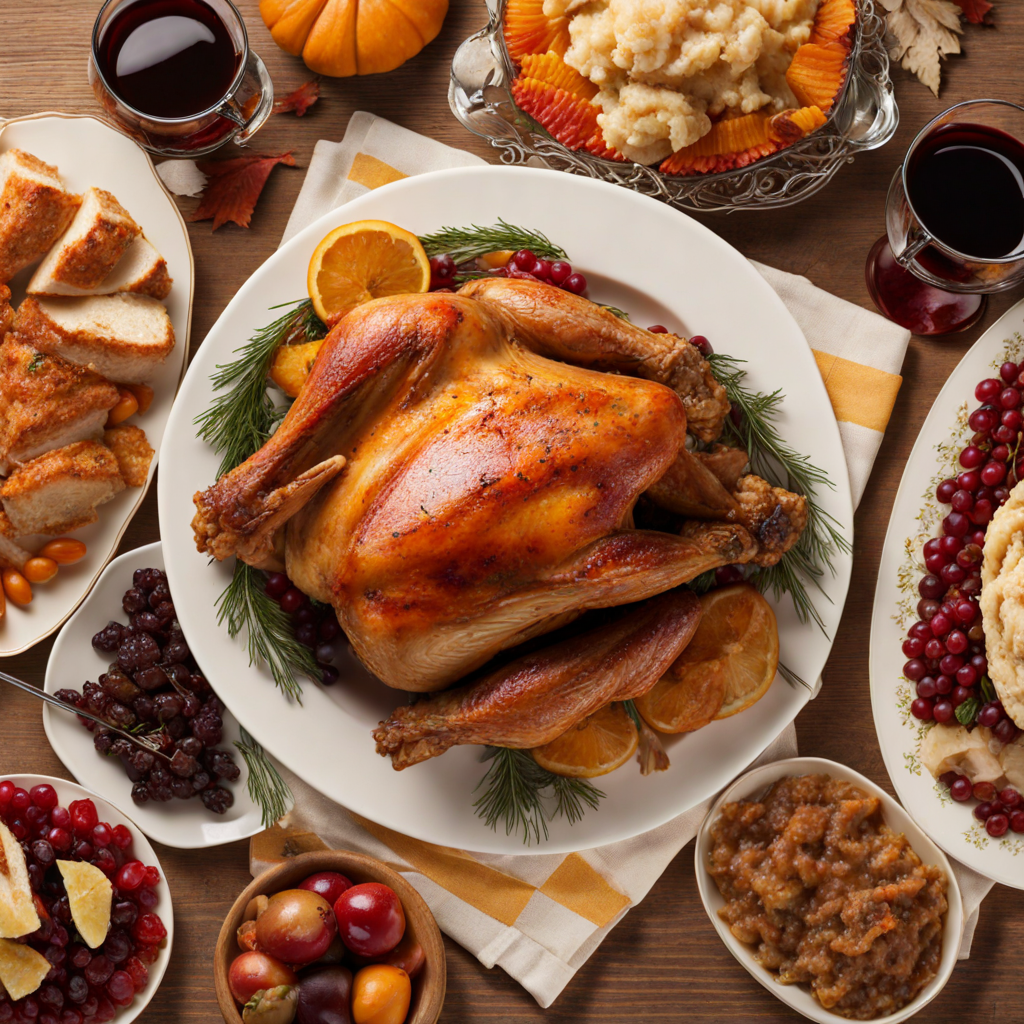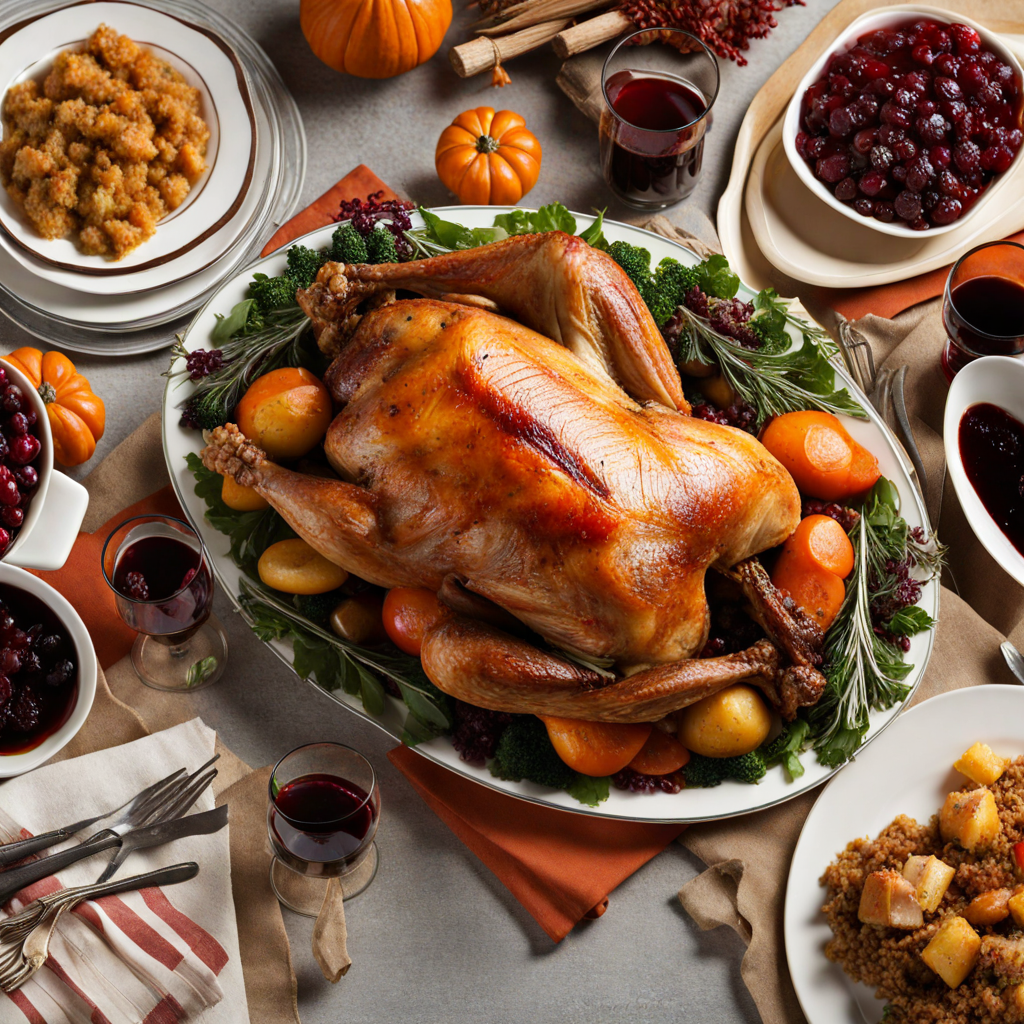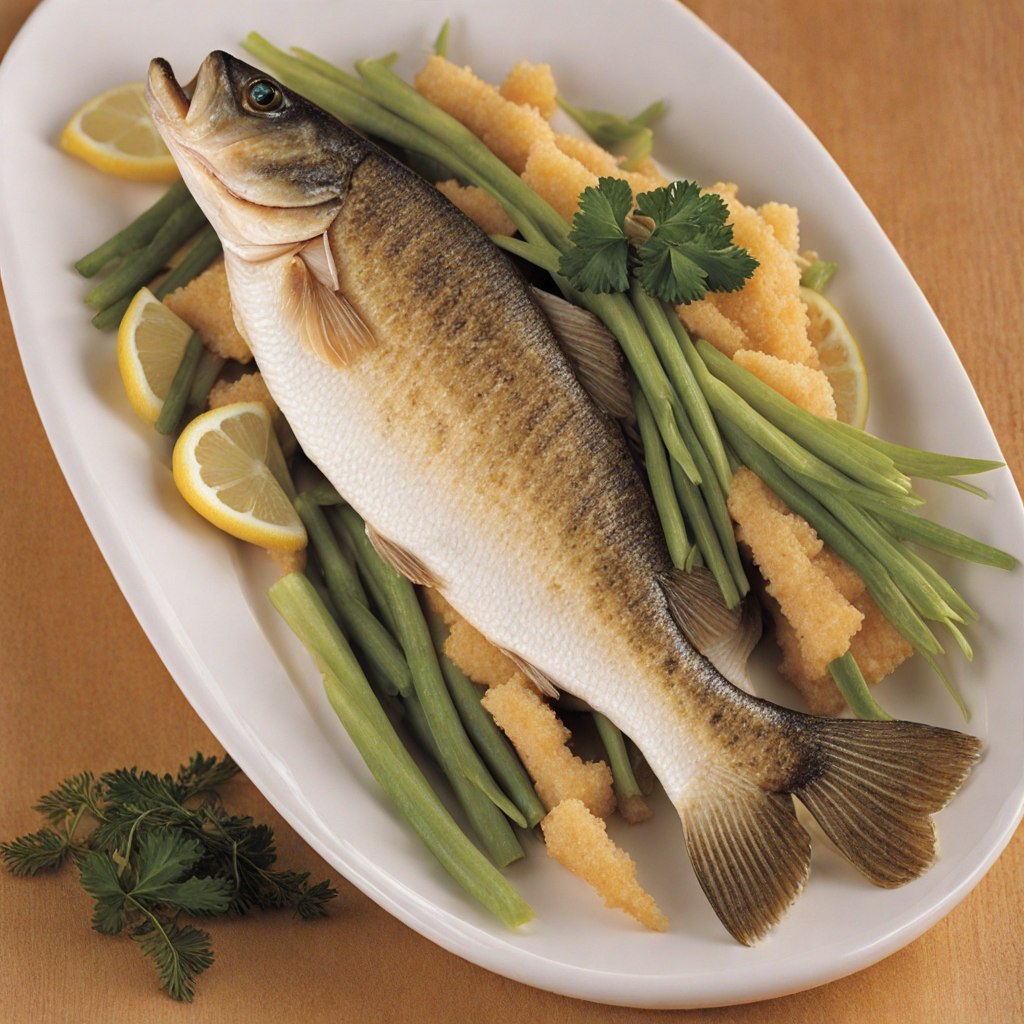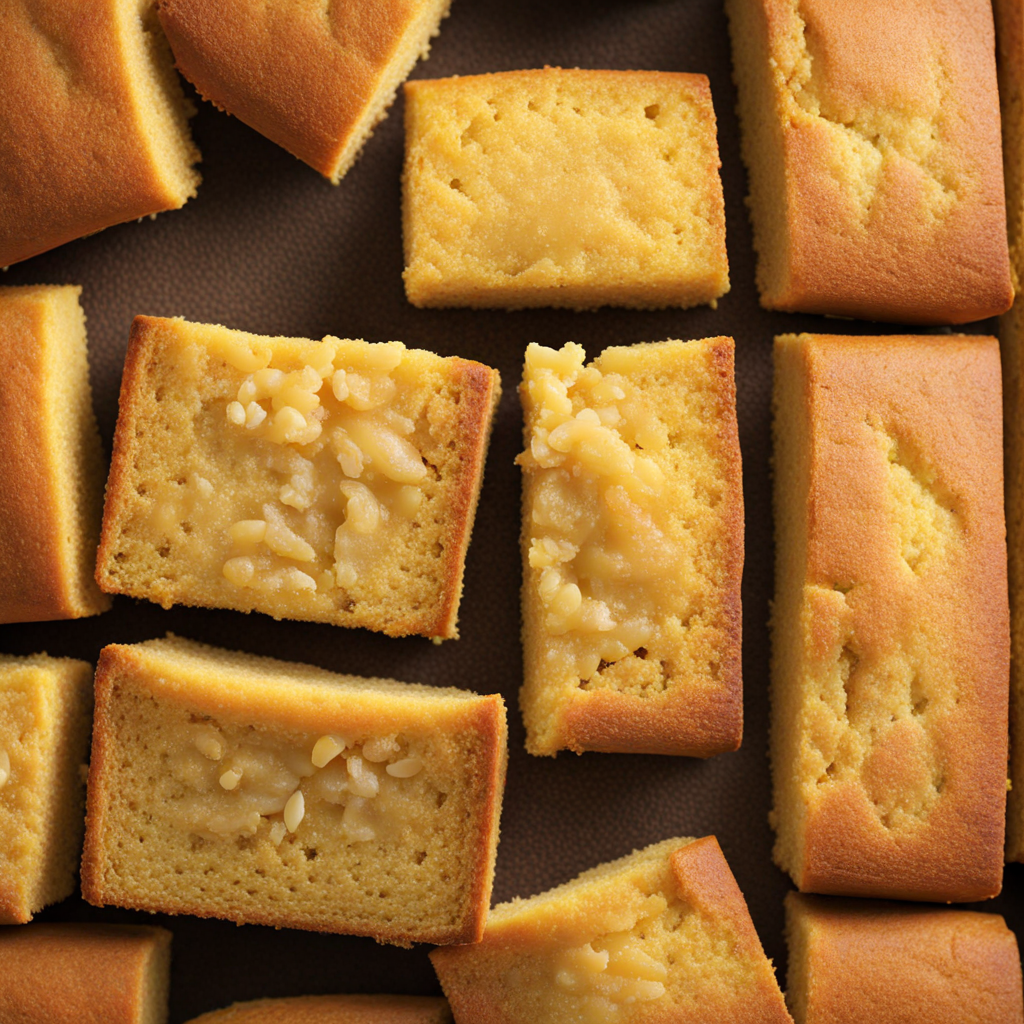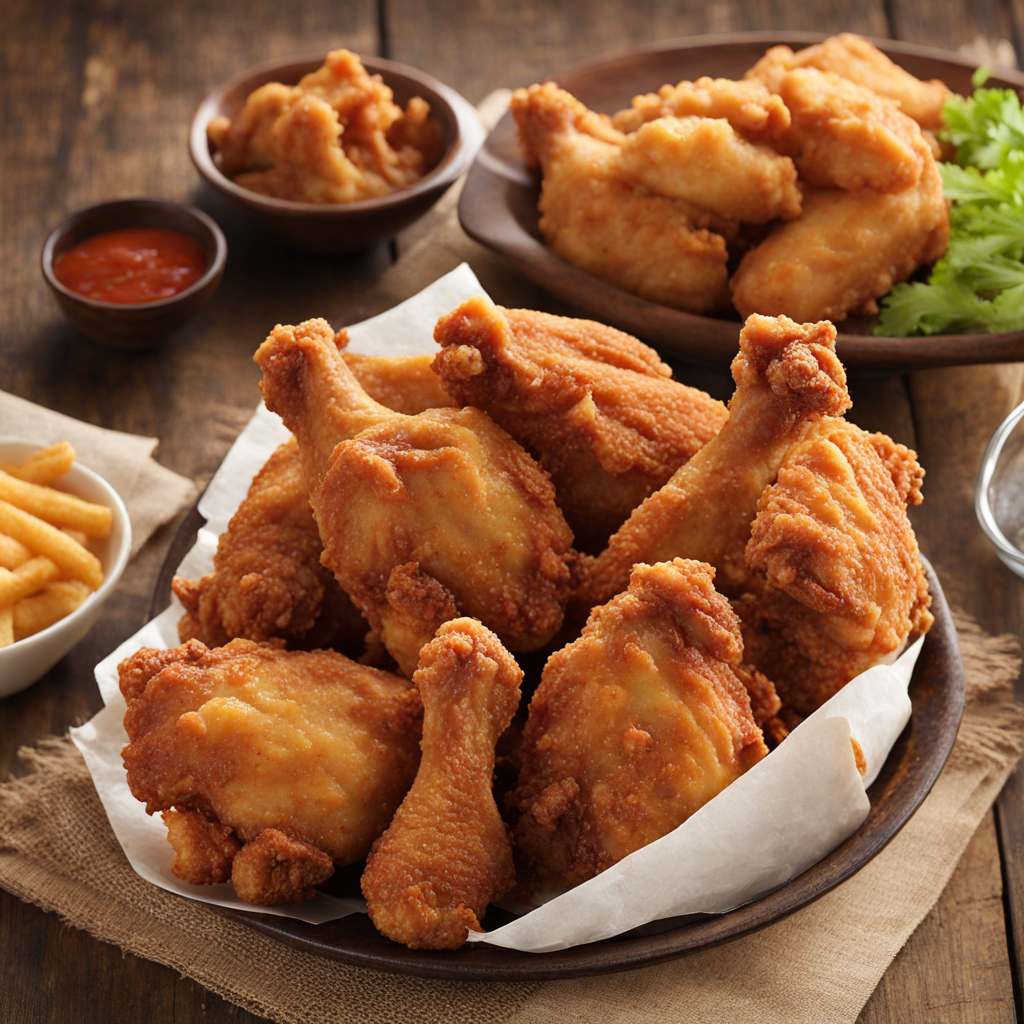Thanksgiving Turkey
Thanksgiving Turkey is an iconic dish that embodies the spirit of American holiday traditions, particularly during the Thanksgiving celebration. This grand centerpiece is typically a large, roasted turkey, often weighing anywhere from 12 to 24 pounds, depending on the number of guests. The turkey's skin is golden brown and crispy, resulting from a careful roasting process that locks in moisture and enhances flavor. A well-prepared turkey is succulent and tender, with juicy, flavorful meat that can range from mild to rich, depending on the brining and seasoning techniques used. Common seasonings include salt, pepper, garlic, and a blend of herbs such as thyme, rosemary, and sage, giving the dish a fragrant, savory profile that tantalizes the taste buds. The preparation of Thanksgiving Turkey often involves stuffing, which adds another layer of flavor and texture. Traditional stuffing, or dressing, is made from cubed bread mixed with onions, celery, herbs, and sometimes sausage or nuts. This mixture is either cooked inside the turkey, allowing the flavors to meld, or baked separately, creating a deliciously crispy crust. The turkey is frequently served with rich gravies made from the drippings, enhancing the meal with a savory, umami kick. Accompanying dishes like cranberry sauce, mashed potatoes, and green bean casserole complement the turkey, providing a well-rounded feast that balances flavors and textures. The experience of enjoying Thanksgiving Turkey goes beyond just taste; it’s a social event that brings family and friends together. As the turkey is carved at the table, the aroma fills the air, evoking feelings of warmth and nostalgia. Each bite offers a satisfying combination of flavors, whether enjoyed on its own or paired with a spoonful of cranberry sauce or a dollop of gravy. For many, the leftovers are just as cherished, inspiring creativity with sandwiches, soups, and casseroles in the days that follow. Thanksgiving Turkey is not just a meal; it’s a celebration of gratitude, heritage, and the joy of sharing delicious food with loved ones.
How It Became This Dish
The History of Thanksgiving Turkey in the United States Thanksgiving, an iconic American holiday celebrated on the fourth Thursday of November, is synonymous with turkey. The turkey, a large bird native to North America, has become a symbol of gratitude and abundance, but its journey to this central place on the Thanksgiving table is rich and complex, intertwined with culture, history, and social significance. #### Origins of the Thanksgiving Feast The roots of Thanksgiving trace back to the early 17th century when English Pilgrims, seeking religious freedom, settled in what is now Plymouth, Massachusetts. In 1621, after a successful harvest, the Pilgrims invited the Wampanoag people to join in a feast, which many historians consider the first Thanksgiving. While it is unlikely turkey was the primary dish—historical accounts suggest deer, fowl, and shellfish were more common—the inclusion of wild turkey was certainly possible, given its abundance in the region. Turkeys were domesticated by Indigenous peoples long before European settlers arrived. The Mesoamerican cultures had been raising them for their meat and feathers for centuries. When the Spaniards arrived in the Americas, they brought turkeys back to Europe, where they quickly gained popularity. By the time of the Pilgrims' feast, this bird had already made its way into the cuisine of the early settlers. #### The Cultural Significance of Turkey Turkey became emblematic of the American identity in the 19th century, particularly as Thanksgiving evolved from a regional celebration into a national holiday. The establishment of Thanksgiving as a formal holiday is attributed to Sarah Josepha Hale, a prominent writer and editor, who campaigned for its recognition. In 1863, President Abraham Lincoln proclaimed Thanksgiving a national holiday, partly as a means to unify a nation torn apart by the Civil War. The turkey, as the centerpiece of this feast, took on cultural significance. It represented abundance, prosperity, and the agrarian roots of American society. The act of gathering around a turkey dinner became a symbol of family unity, shared gratitude, and the celebration of harvest. As America industrialized and urbanized, Thanksgiving provided a nostalgic link to simpler, agrarian times. #### The Commercialization of Thanksgiving Turkey As Thanksgiving gained popularity, so too did the turkey as a commercial product. The late 19th and early 20th centuries saw the rise of the turkey industry as refrigeration technology improved and transportation networks expanded. This allowed for the mass production and distribution of turkeys across the country, making them accessible to families who might not have raised their own. In the 1920s, the turkey became a staple in grocery stores, and its production began to be dominated by large-scale farming operations. The introduction of frozen turkeys in the mid-20th century transformed Thanksgiving further. Families could now purchase pre-frozen birds, making it easier to prepare for the holiday meal. This shift contributed to the turkey's status as the quintessential Thanksgiving dish, with Americans consuming around 46 million turkeys each year for the holiday. #### The Role of Turkey in Thanksgiving Traditions The way turkey is prepared and served has evolved over the years, reflecting regional variations and changing tastes. Traditional Thanksgiving turkey is often roasted, but variations such as deep-fried turkey, smoked turkey, and even turkey brined in unique marinades have emerged. Accompaniments like stuffing, cranberry sauce, and various sides also reflect local and family traditions, making the Thanksgiving meal a diverse celebration of culinary heritage. In the latter half of the 20th century, Thanksgiving turkey dinner became increasingly associated with commercial marketing. Advertisements began to portray the image of a perfectly browned turkey, often accompanied by the phrase "the perfect holiday." This created a standard that many families aspired to, leading to a culture of perfectionism around holiday meals. The turkey also became a canvas for culinary creativity. Chefs and home cooks alike began to experiment with flavors and techniques, leading to new recipes that blended traditional and modern influences. This creativity was showcased through cookbooks, television shows, and food blogs, which celebrated the turkey in diverse forms and flavors. #### Contemporary Issues and the Future of Thanksgiving Turkey In recent years, the turkey industry has faced scrutiny over ethical and environmental issues related to factory farming, antibiotic use, and sustainability. Concerns about the treatment of animals and the ecological impact of large-scale turkey farming have led some consumers to seek alternatives, including heritage breeds, organic turkeys, or plant-based substitutes. This shift reflects broader changes within American food culture, where many are increasingly conscious of their food sources and the implications of their dietary choices. Despite these challenges, the turkey remains a symbol of Thanksgiving. Whether through traditional preparations or innovative new recipes, it continues to serve as a centerpiece for gatherings across the country. The National Turkey Federation reports that about 88% of Americans consume turkey on Thanksgiving, illustrating its enduring place in American culture. #### Conclusion The Thanksgiving turkey has evolved from a wild bird hunted by Indigenous peoples and early settlers to a commercialized staple of American holiday meals. Its cultural significance has grown over centuries, reflecting the changing landscape of American identity, family values, and culinary practices. As families gather around the table each November, the turkey serves not only as a meal but as a symbol of gratitude, unity, and the rich tapestry of American history. The future of Thanksgiving turkey may be uncertain as societal values change, but its legacy as a cherished holiday tradition is firmly rooted in the American experience.
You may like
Discover local flavors from United States


